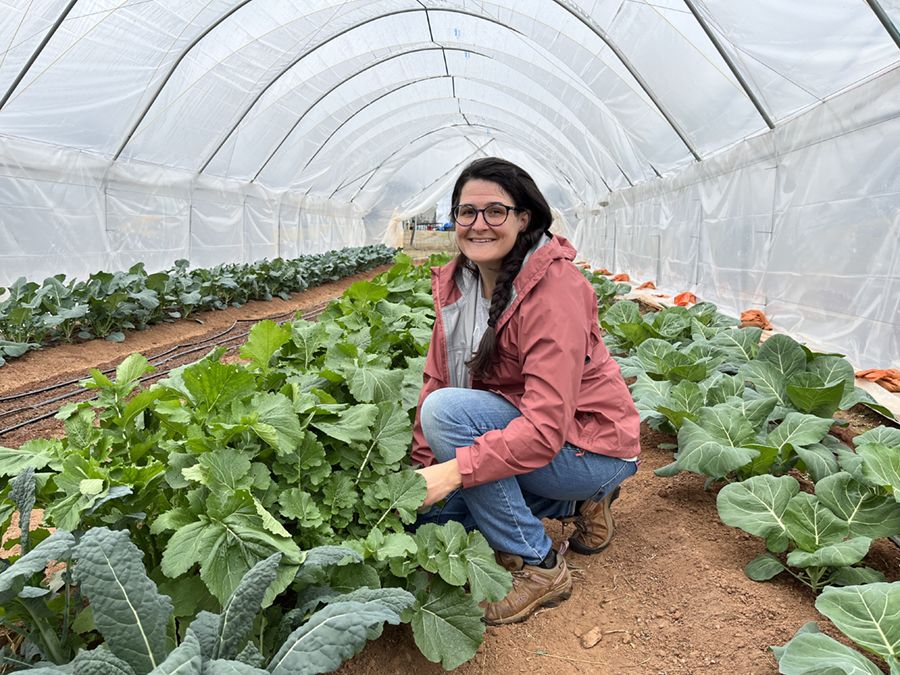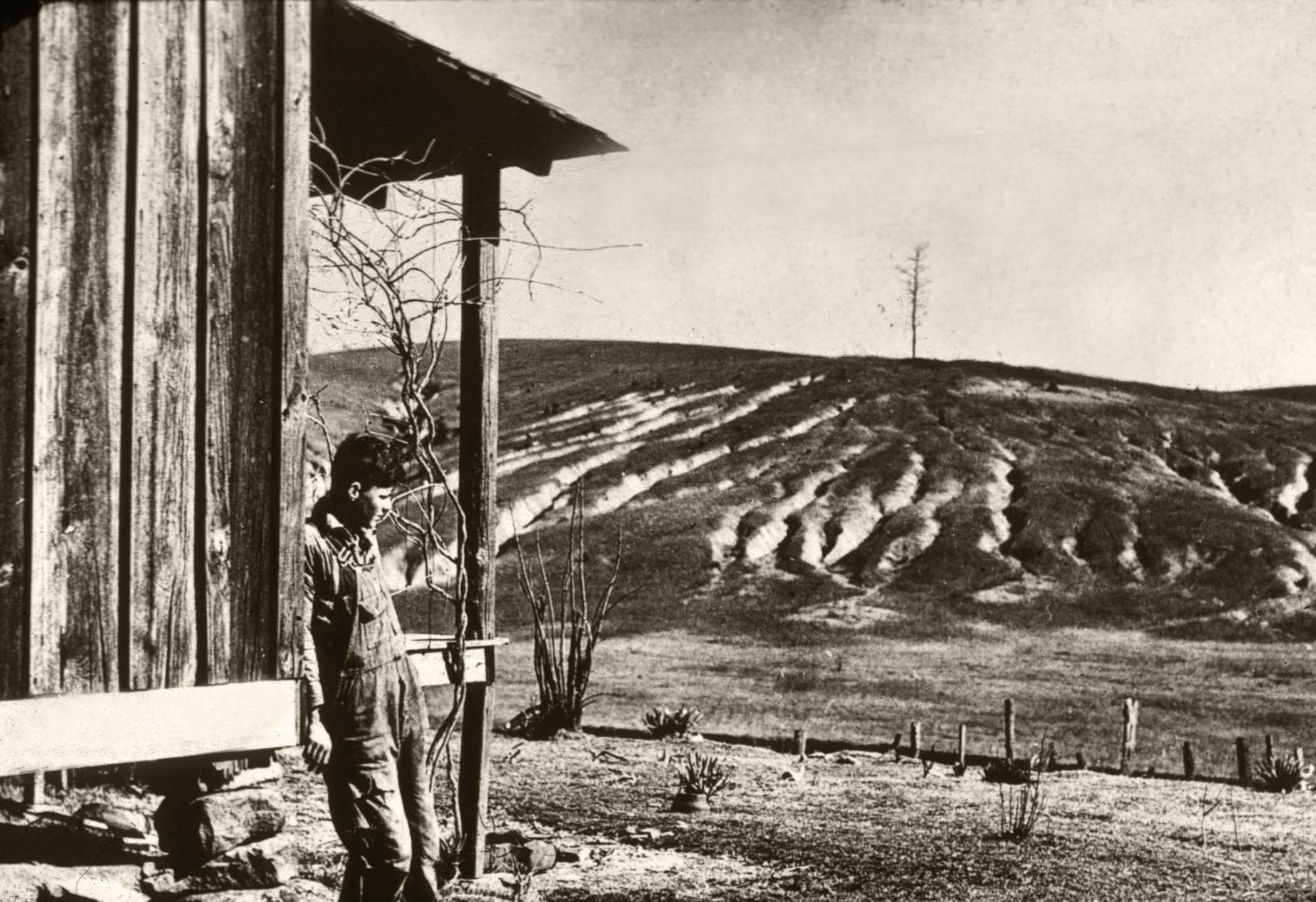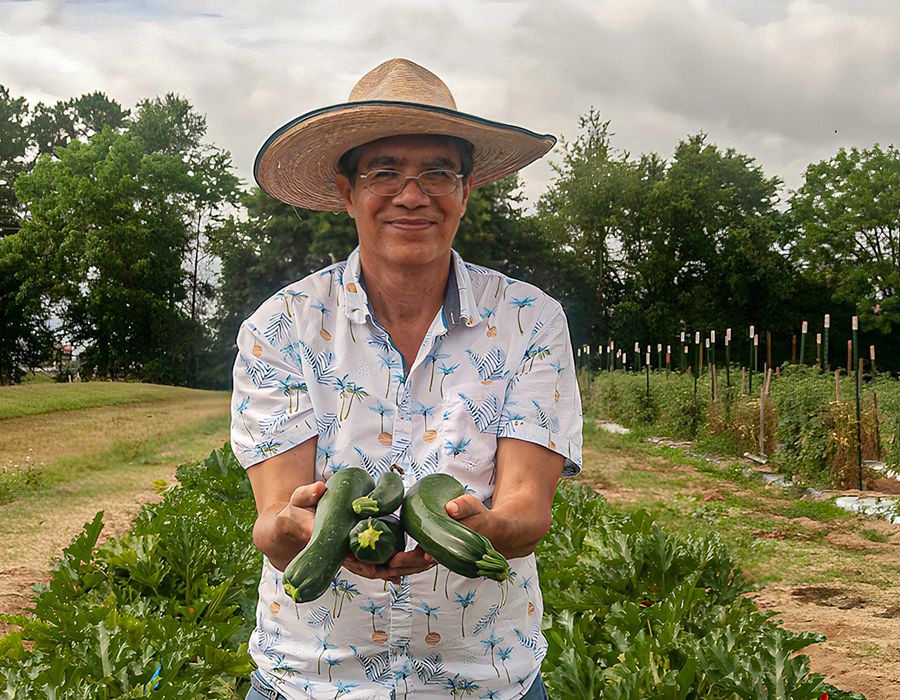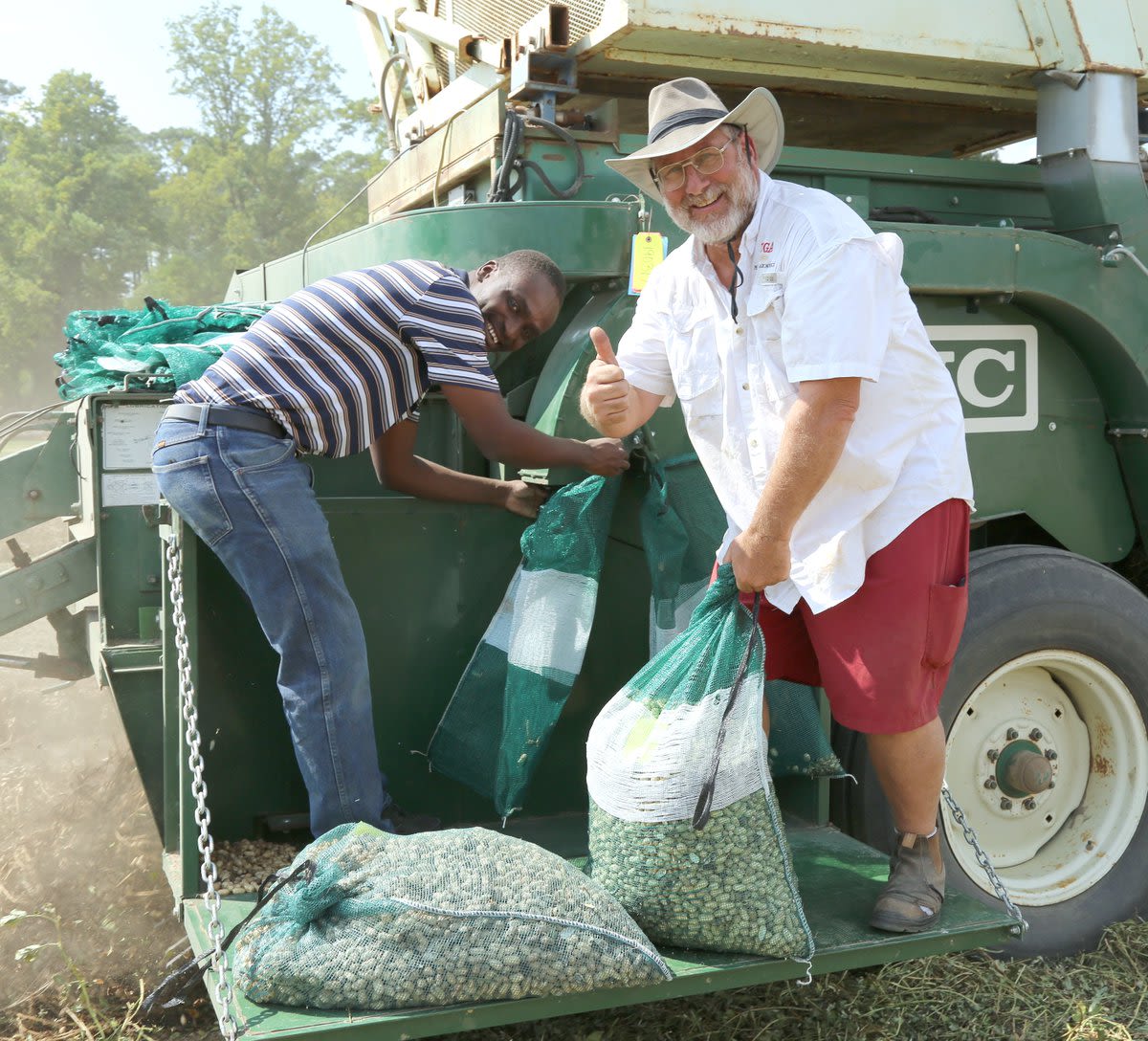Restoring the Earth
Growing interest and attention to regenerative agriculture practices are driving new research aimed toward making the land better than we found it.

Kate Cassity-Duffey, an assistant professor of horticulture specializing in organic production, is the lead researcher for the three-year study to develop best practices for transitioning to organic farming.
Kate Cassity-Duffey, an assistant professor of horticulture specializing in organic production, is the lead researcher for the three-year study to develop best practices for transitioning to organic farming.
Increasing populations and changing climate conditions will require both innovative and ancient growing methods to feed the world. Regenerative agriculture, a movement both burgeoning and broad, is underpinned by the public’s growing awareness of how land stewardship and agricultural production contribute to the fate of our planet.
As a land-grant university, the University of Georgia, led by the College of Agricultural and Environmental Sciences, is charged with providing readily available, research-based programs and educational resources to improve the lives of individuals, families and communities. While research has often driven innovations and changes in agricultural practice, societal change is, in part, driving research into regenerative agriculture.
“Unfortunately, because it does not have a standard definition or regulations attached to a definition, the term can be used abstractly, but to me, regenerative agriculture is part of the fundamentals of what I do with organic and sustainable agriculture,” said Kate Cassity-Duffey, an assistant professor in the CAES Department of Horticulture specializing in organic production.
Refining traditional practices
David Berle is the faculty founder and former director of UGArden, the university’s student-run community farm, which is committed to sustainable practices.
Much like organic practices, which were developed in the late 1800s and early 1900s when producers were starting to look at agriculture as a science, the regenerative farming movement is meant to address the environmental impact of farming, said Berle, a retired associate professor of horticulure.
“We are running out of water, phosphorus and decent, arable land. If we are going to continue doing what we are doing, we need to figure out how to do it in a way that does not keep depleting our resources but restores and improves the land,” he said. “The dream is to put it all back as we found it, but I’m not sure that is possible without dramatic change. Right now we are just trying to stop the bleeding and minimize the impact as much as possible.”
Unlike the Organic Foods Production Act of 1990, which Cassity-Duffey noted took “a literal Act of Congress” to create regulations for organic certification, the regenerative agriculture movement is more broadly defined by those who practice it and those whose research involves those practices.
“These practices can be applied to any operation,” she said. “Regenerative agriculture is focusing on closing the loop in terms of nutrients, inputs and reducing carbon emissions, and it is focusing on building soil health, building soil organic matter and accumulating carbon back into the soil.”
One of the primary practices of regenerative agriculture is cover cropping, which has become an essential focus for conventional and organic producers alike.
“Producers know cover cropping can add and scavenge nutrients, build organic matter in the soil and help with weed control. Regenerative agriculture also involves the addition of manure inputs, with a focus on building nutrients into the soil, so there is less dependence on synthetic fertilizers,” Cassity-Duffey said.
A producer stands on severely eroded farmland during the Dust Bowl, circa 1930s. (Photo courtesy of USDA)
A producer stands on severely eroded farmland during the Dust Bowl, circa 1930s. (Photo courtesy of USDA)
Another critical component of regenerative and sustainable agriculture is reducing tillage in cropping systems. Efforts concentrated on soil and water conservation began in earnest in the U.S. with the establishment of the Soil Conservation Service in 1933 in response to increasing soil erosion and drought that led to the Dust Bowl of the 1930s. In 1994, the organization was renamed the Natural Resources Conservation Service.
“Focusing on conservation and reduced tillage, along with the advent of new technologies, different herbicides and GMO crops, gave producers the ability to till a lot less to control weeds, which often is why they were tilling,” Cassity-Duffey said.
Taking a holistic approach
Professor Juan Carlos Díaz-Pérez, whose research has involved organic and sustainable production since just after he joined UGA’s Tifton campus in 1998, said regenerative agriculture is part of a “one health” concept encompassing research that connects the health of the environment with its effects on animals, plants and humans.
For nearly three decades, CAES horticulturist Juan Carlos Díaz-Pérez has been contributing to the field of sustainable vegetable production, focusing on organic production.
For nearly three decades, CAES horticulturist Juan Carlos Díaz-Pérez has been contributing to the field of sustainable vegetable production, focusing on organic production.
“Everything is interconnected, and practices like those used in regenerative agriculture improve the soil, which involves biological, chemical and physical properties. As we improve soil quality with cover crops, reduced levels of tillage and increased soil microbiota will result in better crops and influence native fauna and human beings as well,” he said.
Producers are removing the barriers between sustainable and conventional agriculture by being open to sustainable practices.
“You can be conventional and move toward sustainability. It is a road. You may never be 100%, but you can increase your production’s sustainability,” Díaz-Pérez said. “The challenge is to demonstrate that you can be sustainable both ecologically and financially,” he added. “If we cannot do that, no system is going to work. It is possible, but we have to keep working at it.”
Through his research, Díaz-Pérez has completed studies on combining organic and conventional fertilizers and found that by using a 50-50 ratio of organic fertilizer and chemical fertilizer, producers achieved yields as high as using 100% conventional fertilizers, if not higher in some cases.
“There was no reduction in yield, and there is the long-term potential of having improvement in soil quality,” he said.
Another study showed that both organic and conventional soils under a no-till system for 20 years had inhibitory properties against southern blight, a lethal fungal disease of row crops and vegetables prevalent in tropical and subtropical climates, like south Georgia’s.
“We found that squash plants grown in organic and no-till soil had less disease compared to plants grown in conventional soil,” Díaz-Pérez explained. “I think growers realize that these sustainable practices are helping their crops, so they are doing it in increasing numbers.”


Soil scientist Henry Sintim (left) and agronomist Glen Harris bag peanuts.
Soil scientist Henry Sintim (left) and agronomist Glen Harris bag peanuts.
Making change accessible
Soil scientist Henry Sintim’s lab is focused on optimizing plant nutrition and revitalizing soil health in row crop production systems in Georgia. While many growers are interested in regenerative agriculture, the state’s climate and soil types present challenges to adopting regenerative practices.
“Most producers want to see a massive bump, especially in organic matter, but in our climate — which is very warm with high moisture that is uniformly distributed — there is a constant decomposition and mineralization of organic matter,” Sintim explained. “It is hard to move organic matter in Georgia, and that undermines the incentive to use regenerative practices.”
Since joining UGA in 2019, Sintim has shifted his research toward integrating regenerative agriculture practices into the management framework for both short-term and long-term benefits.
He is currently working with Wakefield BioChar, a biomass processing plant that takes paper mill waste and converts it into biochar for agricultural use. Biochar is charcoal produced by burning plant matter at extremely high temperatures — 400 to 700 degrees Celsius — in an oxygen-free system that traps the carbon dioxide. This produces a stable carbon product that can be used as a soil amendment and is very slow to degrade — taking approximately 200 years. The company is interested in providing biochar to local growers at no cost to capitalize on the carbon credit market and is working with Sintim to develop recommended biochar application rates.
While incorporating regenerative agriculture practices takes preparation and planning, it is less rules-intensive than completely organic production.
“People often want to draw hard lines between regenerative and conventional agriculture, but these are tools that can benefit all systems. Soil health is one of the best ways, in both conventional and organic systems, to improve yield and reduce inputs,” said Cassity-Duffey, who has seen the space between conventional and organic production begin to shrink with the increased use of sustainable and regenerative practices. “There are ways to implement them on the farm that are not all or nothing.”
Science-based research is the key to identifying which practices will have the greatest long-term benefit for both the farmers and the land.
“All the research is heading in a way that creates more diversity, more variety and, in most cases, is better for the land and the environment, but it is hard to test that. There is very little research money for evaluating the whole farm,” Berle said. “I don’t think any farmer puts on their boots in the morning and says, ‘I am going to destroy something.’ They want to do good and make the world a better place. The question is, how do we do that in a way that still feeds the world?”
Did you enjoy this story?
Check out recent issues of the Almanac for more great stories like this one.







